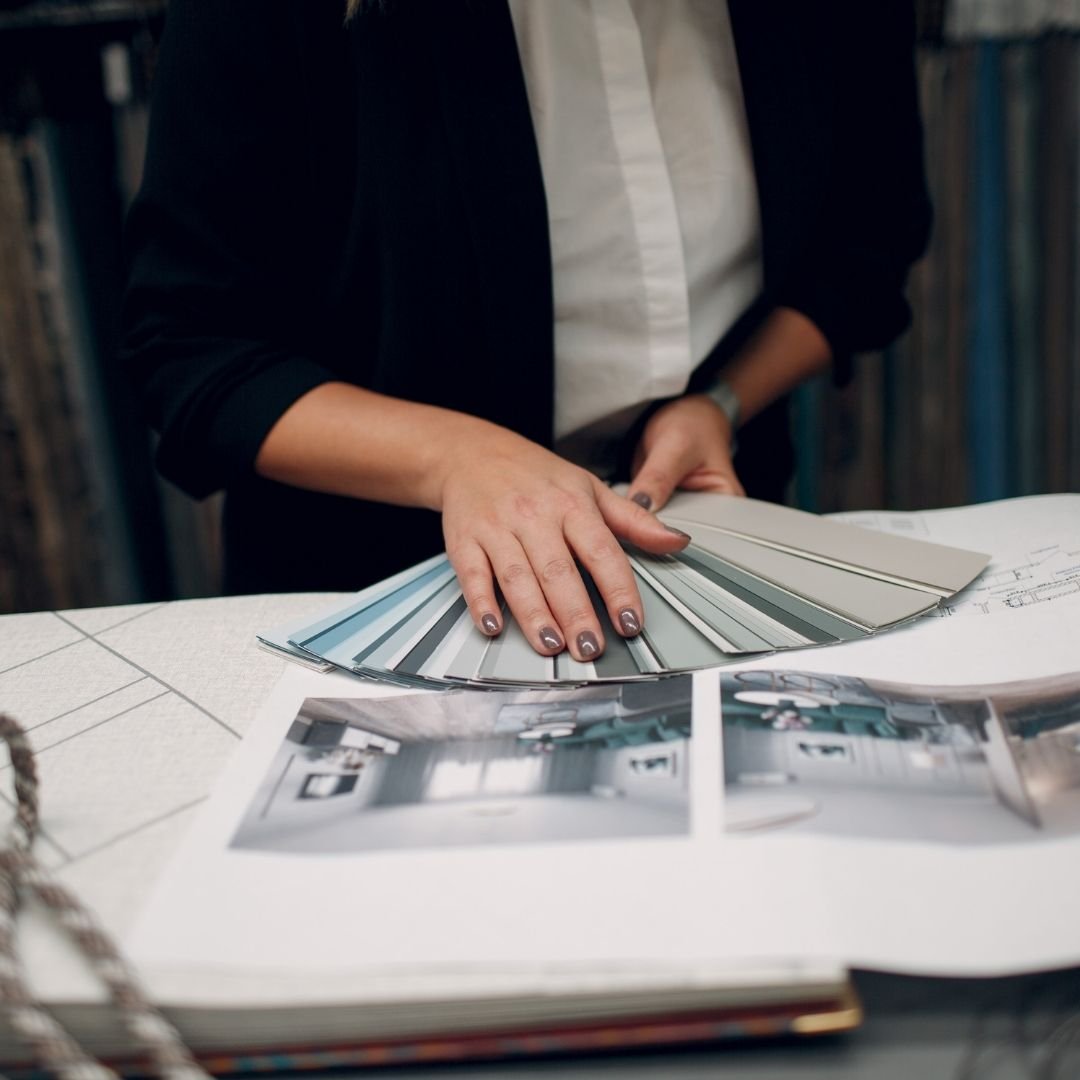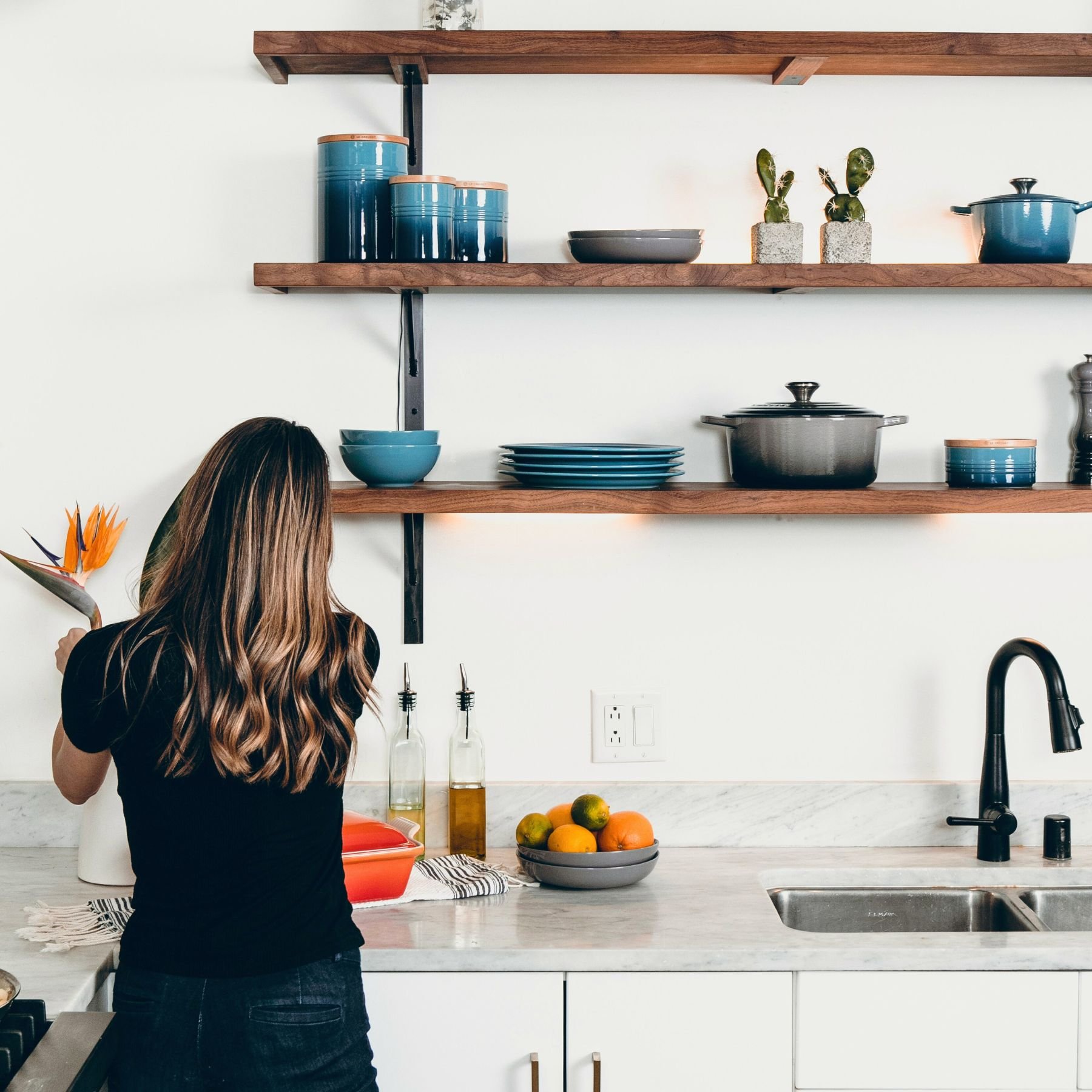Midjourney: To Use or Not to Use for Interior Design
/The cat's out of the bag: AI has been making waves in the interior design industry. Chances are, you or your team are already dabbling in some AI tools. As with any groundbreaking innovation, opinions are divided on the benefits and ethical considerations of using these technologies, especially when it comes to text-to-image generators like Midjourney. It's fair enough to take a beat and weigh these perspectives before deciding how AI fits into your design process. So, let's explore how various designers, each with their unique viewpoints, are using (or not) Midjourney in their work.
Prompt: Design a polished, old-world-meets-contemporary kitchen. The space should feature a white farmhouse sink, light wooden cabinetry, and a large wooden island with ornate detailing. Use a warm color palette with natural wood tones. Include exposed wooden beams on the ceiling, a rustic blue Spanish tile backsplash, and antique brass fixtures. The kitchen should have open shelving displaying dishware and aesthetic cookbooks. The overall look should blend elegance with a rustic farmhouse charm.
"I’m having a great time using Midjourney to visualize design concepts and get the creative juices flowing in the early stages of a project. It’s fantastic for mood boards and initial ideas. However, I’ve decided not to post any AI-generated images on social media. They usually have little glitches or mistakes that look unprofessional, and I don't want to mislead people about my work. Midjourney doesn't always get the proportions or layout right, and sharing those images could seem like I'm endorsing something that's not quite up to par–and I'm very particular about what I endorse as a professional." – Lisa
"Midjourney just doesn’t sit right with me. Some people don’t realize that the images it generates are actually based on other designers’ work, and that feels like it’s robbing them of the credit they deserve. You never know who the original creators are, and that goes against the solidarity we should have in this industry. Plus, my pride comes from crafting something original and tailored to my clients. The design world is already full of look-alikes, and I worry that jumping on the Midjourney bandwagon could make that even worse." – Nadia
"I don’t see how using Midjourney for inspiration is any different from using Pinterest or flipping through design magazines. Honestly, can any design claim to be 100% original? We’re all remixing what’s already out there. Midjourney is just a more efficient tool to get those creative sparks flying. Sure, it’s a starting point, but as designers, we still need to adapt those ideas to fit our clients and their unique spaces. What’s the harm in that?" – Kelly
"I’ve found Midjourney to be hit or miss, and I have to say the initial novelty has worn off for me. I've found myself going back to my tried-and-true methods of gathering inspiration and presenting design concepts. What really drives me crazy is the sheer amount of AI content on Pinterest when I'm searching for viable, real-life examples of specific design features. It's frustrating. I appreciate that some platforms are now asking users to tag AI-generated content, and I would love the option to filter it out. I don't necessarily have an issue with others using AI as a tool, but I'm personally kind of over it.” – Naomi
"I have a love-hate relationship with Midjourney. I’ll admit it’s very useful for creating quick visual references, especially during client meetings when time is of the essence. But I’m a little afraid of becoming overly dependent on it and losing my personal touch. So, I do sometimes use it to get the ball rolling and then step back to refine and personalize the designs myself. It’s a balance, really.” – Priya
"Midjourney is a total lifesaver when I hit a creative block or for initial concept brainstorming. But I draw the line at using AI images in client-facing presentations or social media posts. They don’t feel like my own work, and I’m not comfortable passing them off as such. It’s great for inspiration, but definitely not a replacement for my creativity and professional knowledge. So, I occasionally use it to get ideas flowing, but the ultimate design always comes from me anyway." – Nicole
As you can see, there is a wide range of opinions on this matter, and maybe there isn’t a single right answer. Designers’ views and methods are evolving just as rapidly as the AI tools themselves, and it’s just fine if yours does, too!
xx, Danae




















































































































